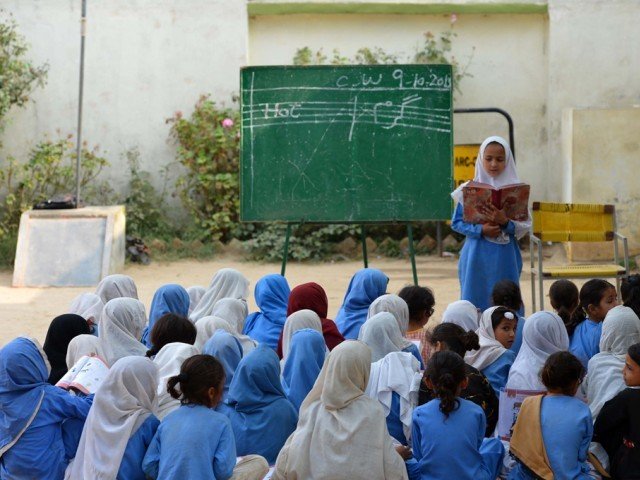
The situation looks grimmer when one looks at statistics pertaining to female education in the province. Despite being 48% of its total population, opportunities for females to get access to good quality education, particularly in rural areas, remain few and far between. As a result, vast potential of the female population remains untapped, which otherwise could transform the socio-economic fabric of society.
The rhetoric about gender equality and equity has not yet turned into effective strategies. Budget for education has hugely increased in the last two decades, but its impact on female education appears to be insignificant because literacy rate and an increase in the enrollment rate are at a snail’s pace. At present, only 46% of adult females are literate compared to 70% of males in Sindh. In rural areas, there is a huge disparity between female and male literacy rate — 20% and 54%, respectively. Urban areas are however slightly at a better position with 68% females and 82% males. Apparently no serious work is being done in rural areas where a large proportion of public schools exist. According to the recently released Sindh Education Profile of 2016-17, 90% of primary, 80% of middle, 64% of elementary (class one to eight), 53% of secondary and 53% of higher-secondary government schools exist in rural areas alone. This is a worrisome distribution of rural and urban government schools.
Low female enrollment is another area of concern. Only 39% of girls study in public schools compared to 61% of boys. Besides that, there is a significant drop-out of both sexes at different stages. It is however higher among girls, nearly 50% girls enrolled in class one drop out by the time they reach class five. Analysis of two periods 2007-2011 and 2012-2016 shows that small percentages of girls survive up to the level of higher secondary education. Under the Sindh Structural Adjustment Credit, the provincial government started girls’ stipend in 2001. Since then, it doles out approximately Rs1 billion each year among those girls who study in secondary schools classes (VI-X). Surprisingly, the education department’s own data doesn’t show promising results as there is a hardly one per cent improvement in the transition rate of girls from primary to secondary level. This points out two things: targeting method is ineffective or there is a leakage of funds or perhaps both.
However, the main factor behind girls’ low enrollment is the chronic problem of missing facilities — approximately 50% schools lack drinking water, electricity and washrooms! Since 1991, the provincial education department has been collecting information about missing facilities on annual basis but it is infuriating to observe no significant improvement in terms of provision of the same has been made till date. These issues badly reflect on the capacity of the education department that regularly collects information about schools’ need and have financial resources at its disposal but yet cannot resolve the problem! Twenty-six years have passed, how many more decades do we need to wait for schools to be equipped with basic facilities?
I often visit villages and rural areas of Sindh. It is heartening to see a positive change in parents’ thinking vis-à-vis girls’ education. Fortunately, cultural or religious hurdles pertaining to girls’ education have disappeared to a great extent. The problem now lies on the supply side. Some local NGOs supported by the Sindh Education Foundation, a semi-government entity, are filling the gap through establishment of schools with a majority of female teachers. But their sustainability is a challenge. Teachers don’t receive minimum wages and female teachers give up jobs when they get married or move out of the village. Therefore, low cost private schools can be an interim solution but in the long run it would perpetuate exploitation of teachers who currently get less salary than the drivers in the organisation.
Despite spending too much time and resources on developing policies and plans, there is no clear thinking regarding a long-term solution. Project-based approach and adhocism have compounded the challenges being faced by the education sector. Sindh needs to take quick and effective measures. Further ignoring this area poses a serious risk to economic and social progress.
Lastly, the Education Reform Act is going to be tabled in the provincial assembly in coming weeks. It is an intriguing move as it seems like a tactic to justify a case for fresh loans. So, instead of a new legislation, bold but simple steps must be taken about improving education governance focusing on girls’ education and building capacity at district and divisional offices level. Hope, sanity will prevail.
Published in The Express Tribune, January 28th, 2018.
Like Opinion & Editorial on Facebook, follow @ETOpEd on Twitter to receive all updates on all our daily pieces.

1731329418-0/BeFunky-collage-(39)1731329418-0-165x106.webp)












COMMENTS
Comments are moderated and generally will be posted if they are on-topic and not abusive.
For more information, please see our Comments FAQ